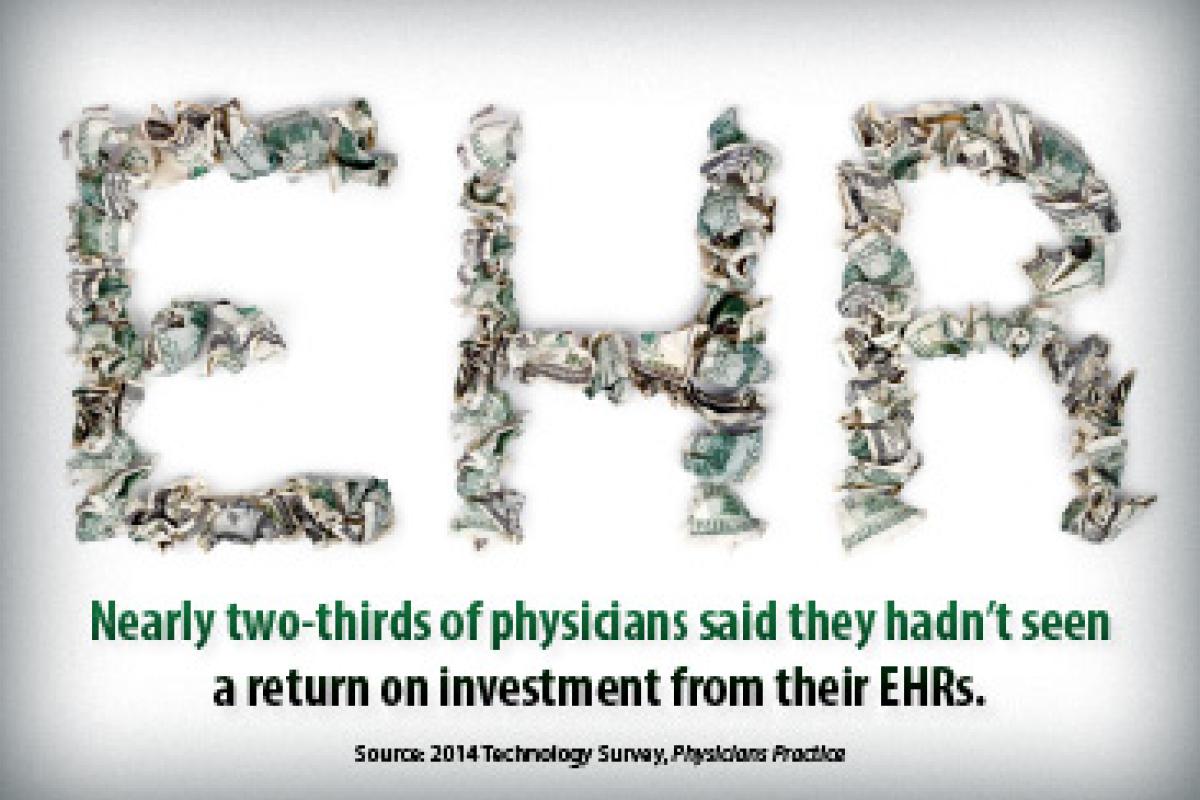Electronic health records (EHR) were a topic of continual discussion and examination this year—no doubt because they hold so much promise yet cause so much frustration. From vendor shortcomings to impossible meaningful use impositions, many problems need to be addressed. Learn more about the pain points identified in 2014 and the work under way to transform EHRs from a burden to a useful tool for physicians and their patients and improve the meaningful use program.
 Building on an AMA-RAND study last fall that identified one of the primary drivers of professional dissatisfaction among physicians as cumbersome EHR systems that get in the way of providing high-quality care, the AMA convened an expert panel to identify the top challenges and solutions for useful EHR systems.
Building on an AMA-RAND study last fall that identified one of the primary drivers of professional dissatisfaction among physicians as cumbersome EHR systems that get in the way of providing high-quality care, the AMA convened an expert panel to identify the top challenges and solutions for useful EHR systems.
Part of the AMA’s Professional Satisfaction and Practice Sustainability initiative, this advisory committee of practicing physicians and health IT experts, researchers and executives in September released a framework for EHR usability that focuses on leveraging the potential of EHRs to enhance patient care, improve productivity and reduce administrative costs.
The eight challenges and solutions outlined in this framework prompted physicians around the country to weigh in on which EHR improvements would help them the most in their practices. Among the comments from physicians were common themes, such as ensuring that data collected can help physicians improve health outcomes, creating consistency across systems so information can be shared and increasing efficiency rather than inhibiting productivity.
The AMA is using this EHR usability framework to work with physicians, vendors, policymakers, health care systems and researchers to drive EHR improvements that can advance the delivery of high-quality, affordable care.
In 2014, the AMA achieved important improvements to help physicians manage the regulatory side of EHRs, including:
- Stage 2 of the meaningful use program was extended for a full year.
- A significant new exemption was added to help physicians avoid financial penalties.
- Physicians were allowed to use new, old or a combination of both versions of certified software to meet meaningful use in 2014.
- Physicians got an extra two months to apply for a hardship exemption from meaningful use.
- Physicians are allowed to accept donated EHR systems from hospitals, health systems and other entities without violating federal anti-kickback regulations through 2021. That means entities covered under the rules can donate software, training and other services that small practices need to adopt EHRs.
- Federal officials are making physicians’ health IT concerns a priority. The Office of the National Coordinator for Health Information Technology released its 10-year vision for health IT, setting its sights on achieving nationwide interoperability of EHRs, a primary concern of physicians. The agency also restructured its workgroups to seek more input from practicing physicians.
Watch AMA Wire® throughout the year ahead for continued updates about the AMA’s work to improve the meaningful use program and EHR systems.




